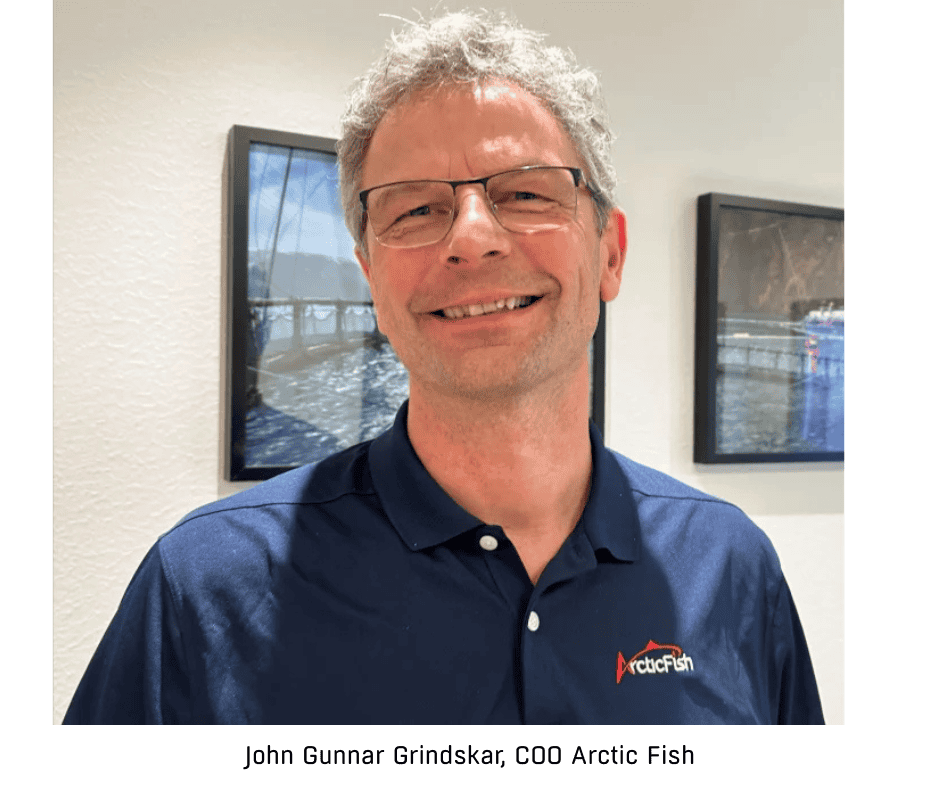When everything freezes and darkness falls, Arctic Fish has full control of the fish
It all started in what is considered to be one of Iceland’s most demanding areas for fish farming – the Vestfjords. In 2011, Arctic Fish was born with a clear belief that fish farming could be done better.
Since then, the journey has been driven by growth, pioneering spirit and new milestones. From the first smolt in the sea in 2017 to its own slaughterhouse with a capacity of 50,000 GWT in 2023 – Arctic Fish has gone from idea to industrial production in record time.
In 2025, they also made history as the first aquaculture company in the world to measure and report sexual maturation (GSI) using artificial intelligence – recognized by the Icelandic Food and Veterinary Authority as a global milestone.
But what’s behind the success? Let’s go back a few years in time.
In Iceland, nature sets the terms. Long winters, cold and demanding weather make it almost impossible to follow up the fish for parts of the year – challenging both growth control and fish welfare.
As Arctic Fish’s production ramped up, the need for insight became increasingly clear. They needed a way to follow the fish – even when it couldn’t be handled manually.
The solution? A tool that could be their eyes below the surface – whatever the weather, whatever the season.
“Growth requires insight – even when everything freezes.”
– We aim to produce 25,000 GWT by 2029, but it’s not just about volume, says John Gunnar Grindskar, COO of Arctic Fish. “We’re concerned with how we grow – and how we ensure the best possible conditions for the fish every step of the way.
For Arctic Fish, much of the answer lies in larger smolts and shorter time in the sea, but also in technology that provides insight without manually handling the fish.

“We’ve avoided taking up salmon for lice counts and analysis, because it involves sacrificing the fish. This has given us less data to base good decisions on. That’s exactly what OptoScale has now solved for us – in a very effective way.”
– John Gunnar Grindskar, COO of Arctic Fish
2024 was a turning point. Increased knowledge about lice control, the need for more precise growth data and a focus on post-release wounds and mortality led to one clear conclusion: They needed better tools.
– OptoScale’s bioscopes give us valuable insight in a period where we are otherwise more or less blind,” says Grindskar. – It’s not just about counting lice or measuring average weight – it’s about making better decisions. For the fish. For the economy. And for the environment.
When development swims in time
Grindskar says that Arctic Fish has ambitions for both growth and improvement, but that it requires more than biological efforts – it requires technological cooperation. He points out that OptoScale provides flexible solutions, rapid development and close follow-up.
– We chose OptoScale’s camera technology because it provides the insight we need to make better decisions – and because it is developing rapidly in the right direction. At the same time, we believe that the entire industry must contribute to the adoption of new technology. If we are to raise the standard for fish welfare, we must do it together.
Technology that withstands Iceland
– Together with Arctic Fish, we’ve developed technology that provides precise insights throughout the winter – even when temperatures are low and manual handling isn’t an option. With the bioscope, we can monitor growth, lice levels, and wound development without disturbing the fish. And the data holds up – even under the most demanding conditions, says Audhild Blomsø, Product Manager at OptoScale.
World’s first AI-based GSI measurement
Through close collaboration, Arctic Fish and OptoScale have developed the world’s first method for measuring gonadosomatic index (GSI) using artificial intelligence.
– With this solution, we can track the development of sexual maturation throughout the entire year, explains John Gunnar Grindskar. – It gives us a stronger foundation for planning harvest, setting priorities, and taking action early – all to the benefit of both fish welfare and production.
– Arctic Fish has helped shape the solution from the very beginning. They’ve challenged us, provided valuable feedback – and shown that it’s possible to be first in the world when you dare to try something new, says Blomsø. – Seeing how Arctic puts the technology to use confirms we’re heading in the right direction. This is a clear example of how biology and technology can come together to improve aquaculture. There’s a reason why MAST (the Icelandic Food and Veterinary Authority) calls this a milestone in aquaculture technology.
The road ahead
There are many factors behind the results: Biological control, dedicated professionals – and technology that delivers precise insights, even when nature makes it challenging.
– We started with a limited number of cameras from OptoScale to test their usefulness,” says Grindskar. – Now the goal is clear: To use this as a standard tool in all locations. The insight we gain makes it possible to prioritize correctly and take action earlier – exactly how the technology is intended to work.
– There is no shortcut to good results. But with the right people and the right tools, we’re well on our way to farming in a way we can be proud of.
